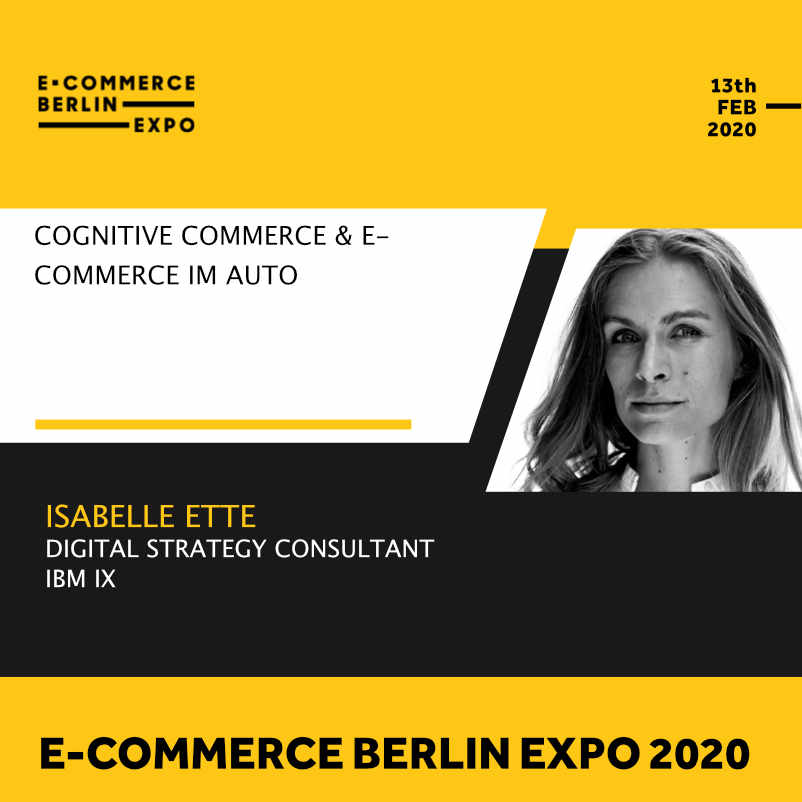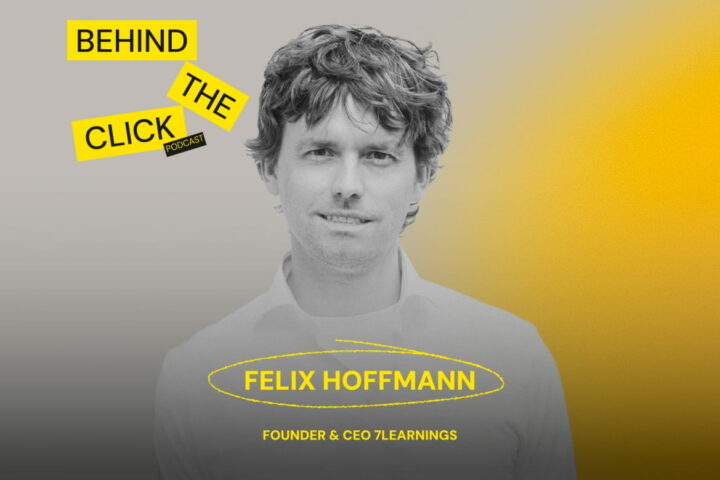“Can there be a new touchpoint, relevant for e-commerce, in the car?” – interview with Isabelle Ette (IBM iX)
Written by
Kinga EdwardsPublished on

We had a pleasure to virtually chat with Isabelle Ette, Digital Strategy Consultant at IBM iX, about her impressive experience in the automotive industry. Read on to find out what will Isabelle talk about during the upcoming E-commerce Berlin Expo 2020!
Could you describe your typical workday at IBM iX? What do you do on a daily basis?
I work at the IBM iX studio Berlin, which is part of the global iX agency family. Digital professions like mine tend to be fuzzy; this is why I explain what I do to different people in different ways. E.g. I summarized for my grandmother that I’m like a butler to managers that want to learn more about the internet.
You’ve recently started cooperating with ŠKODA AUTO. What is your role as a Roll-out Strategist?
ŠKODA AUTO is especially interesting as a client from my point of view because it is locally rooted and traditional yet aware of the need for change in how they do business. I support ŠKODA AUTO in finding means to roll-out digital products.
The way it works is that the products are designed once in basic form and then need various adaptations in order to work properly, say at a national level or with a set of technical preconditions.
If the direction of our initiatives was as a red carpet, it would be rolled out from HQ (ŠKODA AUTO or Volkswagen Group) to their stakeholders/markets.

You’re an author of the IBM Automotive Playbook. Can you share some highlights from this publication? What is the story behind it?
The playbook is a compendium that combines IBM’s strategic ideas, guiding principles and theory on how to monetize on data. The latter is a question that OEMs are very interested in since vehicles are connected.
Cars generate, absorb and transmit lots of data. Naturally, the question arises on how to use these data streams economically. The Automotive Playbook functions as a conversation starter to discuss what is possible within a given client’s situation.
We started to work on the playbook in a rather informal environment based on a How-might-we question from our sponsor. This is a very recommendable approach if the client dares – fix a budget, provide an open-ended task and let the digital creatives find their way.
We summarized findings and learnings from the sponsor, matched it with our own expertise and materialized a beautiful paperback guide which proved a great asset to take for roadshows.
I believe the nice part about the playbook is that it is not digital. The print is great to talk about abstract concepts, as in, books are amazing.

You have experience in working in Korea. How does the Korean digital market differ from the European one?
Interesting question! I have never assessed that in detail, but there are some notions that I can share. For instance, I noticed during my stay that people are super casual with digital payment methods and also willing to effect micro-payments, e.g. in exchange for information.
Also, scanning a QR code provided in whatever context comes naturally to Koreans; they want to learn more; they are eager not to miss out. I deduce a generally trusting attitude towards tech from this, something I miss in Germany.
Here, users are intuitively defensive and have to be strongly incentivized to experiment and adopt new digital offerings.
At E-commerce Berlin Expo 2020, you’re going to talk about “Cognitive Commerce & e-Commerce in the car”. Can you explain what cognitive commerce is? What will be the main takeaway of your presentation?
I will muse about whether and how the passenger car could become a viable new sales channel for eCommerce. We will start with the assumption that the variety of touchpoints that are relevant for eCommerce will increase over time.
At the moment we focus on web and mobile applications. The question is whether there can be a new touchpoint in the car. Because if it were then the company that has built the car would want to control the user experience.
The cognitive part is that services or products offered in-car will have to leverage the situative environment of the driver/passengers. Nobody can really tell what will happen, hence we’ll discuss what might possibly be the case with what consequences. I’ll share predictions from my automotive crystal ball.
Thanks for your insights, Isabelle!

Hungry for more e-commerce tips?


